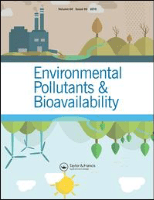
Environmental Pollutants and Bioavailability
Scope & Guideline
Transforming Knowledge into Environmental Action
Introduction
Aims and Scopes
- Pollution Assessment and Risk Analysis:
The journal emphasizes the assessment of environmental pollutants, particularly heavy metals, microplastics, and organic contaminants. It includes studies that evaluate the sources, distribution, and potential risks associated with these pollutants to ecosystems and human health. - Remediation Techniques and Innovations:
Research published in the journal often explores innovative remediation strategies for contaminated environments, such as the use of biochar, nanomaterials, and biotechnological approaches to detoxify water and soil. - Environmental Impact Studies:
The journal covers studies that investigate the ecological impacts of pollutants on various biological systems, including plants, animals, and microorganisms, providing insights into how pollutants affect biodiversity and ecosystem functioning. - Bioavailability and Speciation of Contaminants:
A core focus is on the bioavailability and speciation of contaminants, which involves understanding how different forms of pollutants interact with biological systems and their potential uptake by organisms. - Technological Advances in Environmental Monitoring:
The journal publishes articles that highlight advancements in monitoring technologies and methodologies for detecting and quantifying pollutants in various environmental matrices.
Trending and Emerging
- Microplastic Pollution and Its Impacts:
An increasing number of studies are focusing on microplastic pollution, particularly its sources, transport mechanisms, and ecological impacts, reflecting growing global concern over plastic waste in the environment. - Bioremediation and Phytoremediation Techniques:
Research on bioremediation and phytoremediation has gained traction, highlighting the use of biological systems, including plants and microorganisms, to detoxify contaminated sites, which is seen as a sustainable approach to environmental cleanup. - Health Impacts of Environmental Contaminants:
There is a noticeable trend in exploring the health implications of exposure to various pollutants, particularly heavy metals and chemicals, linking environmental exposure to human health outcomes, which underscores the relevance of environmental health research. - Innovative Materials for Contaminant Removal:
The journal is seeing a rise in studies that develop and optimize novel materials, such as biochar and nanocomposites, for the effective removal of contaminants from water and soil, indicating a shift towards material science applications in environmental remediation. - Climate Change and Pollutant Dynamics:
Emerging studies are increasingly examining the interactions between climate change factors and pollutant dynamics, including how changing environmental conditions affect the behavior and toxicity of contaminants in ecosystems.
Declining or Waning
- Traditional Chemical Analysis Methods:
There has been a noticeable decline in studies that rely solely on traditional chemical analysis methods for environmental monitoring. This shift may be due to the increasing adoption of more sophisticated techniques, such as molecular and genomic approaches. - General Reviews on Pollution:
The journal has seen a decrease in the publication of generic review articles on pollution topics, indicating a trend towards more focused, data-driven research that explores specific pollutants or innovative remediation methods. - Soil Contamination Studies without Contextual Analysis:
Research focusing solely on soil contamination without integrative analyses that consider ecological and human health implications has become less frequent, suggesting a move towards more comprehensive studies that connect soil health with broader environmental issues.
Similar Journals
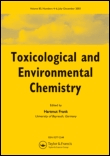
TOXICOLOGICAL AND ENVIRONMENTAL CHEMISTRY
Exploring the impacts of pollutants on our environment and well-being.TOXICOLOGICAL AND ENVIRONMENTAL CHEMISTRY is a pivotal journal published by Taylor & Francis Ltd, addressing critical intersections between environmental chemistry and toxicology since its inception in 1979. With its ISSN 0277-2248 and E-ISSN 1029-0486, the journal serves as a platform for rigorous research and innovative methodologies in pollution control, health implications of environmental chemicals, and the broader spectrum of toxicological studies. Although it currently does not offer open access, the journal's impact in the field is underscored by its Category Quartiles rankings in 2023, placing it in Q3 across Environmental Chemistry, Health, Toxicology and Mutagenesis, and Pollution categories. Furthermore, its Scopus rankings reveal its significant role within the scientific community, specifically in areas such as Environmental Science and Toxicology. The journal aspires to foster multidisciplinary dialogue and advance knowledge that contributes to environmental sustainability and public health, making it an essential resource for researchers, professionals, and students dedicated to these fields.
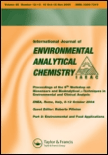
INTERNATIONAL JOURNAL OF ENVIRONMENTAL ANALYTICAL CHEMISTRY
Pioneering research for a sustainable future.INTERNATIONAL JOURNAL OF ENVIRONMENTAL ANALYTICAL CHEMISTRY, published by Taylor & Francis Ltd, stands as an essential resource in the interdisciplinary field of environmental science and analytical chemistry. With a history dating back to 1971 and a convergence period extending to 2024, this journal addresses urgent global challenges by providing a platform for high-quality research that encompasses pivotal aspects of environmental analysis, pollution, and public health. The journal’s significant impact is reflected in its 2023 rankings, placing it in the second and third quartiles across various relevant categories, including Analytical Chemistry, Environmental Chemistry, and Water Science and Technology. Researchers and practitioners are encouraged to contribute to its wealth of knowledge, making it a vital reference for emerging studies in Health, Toxicology and Mutagenesis and beyond. Although it is not an open-access journal, subscriptions provide unparalleled access to groundbreaking research that can influence both academia and industry practices.

JOURNAL OF ENVIRONMENTAL BIOLOGY
Fostering Sustainable Practices through ResearchJOURNAL OF ENVIRONMENTAL BIOLOGY, a prominent publication in the field of environmental science, is published by Triveni Enterprises in India. Since its inception in 1988, this journal has served as a vital platform for disseminating research related to environmental biology, encompassing areas such as environmental engineering, health impacts of toxic substances, and the mechanisms of mutagenesis. With an increasing impact in the scientific community, the journal is categorized in the third quartile (Q3) in Environmental Engineering and fourth quartiles (Q4) in Health, Toxicology, and Mutagenesis according to 2023 rankings. Researchers, professionals, and students will find value in its robust collection of original research articles, review papers, and case studies that address pressing environmental issues and promote sustainable practices. Although it is not an open-access journal, the comprehensive scope of the content published from 1988 to 2024 ensures that critical insights remain accessible to those dedicated to advancing the knowledge in environmental sciences.

SU URUNLERI DERGISI
Innovating Solutions for Aquatic Resource ManagementSU URUNLERI DERGISI, published by EGE UNIVERSITY, FACULTY OF FISHERIES, is a premier open-access journal dedicated to advancements in aquatic sciences and fisheries research. With the ISSN 1300-1590 and E-ISSN 2148-3140, this journal has been committed to disseminating high-quality research since 1984, offering valuable insights into the management and conservation of aquatic resources. Based in BORNOVA-IZMIR, Turkey, the journal serves as a crucial platform for researchers, professionals, and students who are actively engaged in the study of fishery practices, aquaculture, and related environmental challenges. As a resource for innovative and impactful studies, SU URUNLERI DERGISI encourages submissions that foster collaboration and advancement within the aquatic research community.
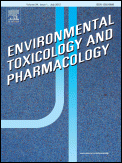
Environmental Toxicology and Pharmacology
Exploring the intersection of pollutants and biology.Environmental Toxicology and Pharmacology, published by Elsevier, is a leading journal dedicated to advancing our understanding of the effects of environmental pollutants on biological systems. With an ISSN of 1382-6689 and an E-ISSN of 1872-7077, this journal covers a wide range of studies related to toxicology, pharmacology, and environmental health. The journal is classified as Q2 in key categories such as Health, Toxicology and Mutagenesis and Medicine (miscellaneous), and sits impressively in Q1 for Toxicology, reflecting its strong impact in the field. As of 2023, it ranks #30 out of 133 in Toxicology and #40 out of 148 in Health, indicating its high relevance and contribution to research. While the journal is not currently open access, it remains a pivotal resource for researchers, professionals, and students seeking to explore the intricacies of environmental health effects. Its commitment to publishing high-quality peer-reviewed research positions it as a crucial platform for scientific dialogue and discovery.

ENVIRONMENTAL SCIENCE & TECHNOLOGY
Driving interdisciplinary dialogue for pressing environmental challenges.ENVIRONMENTAL SCIENCE & TECHNOLOGY, published by the American Chemical Society, is a premier journal dedicated to the rapid dissemination of innovative and impactful research in the fields of environmental science and technology. With an ISSN of 0013-936X and an E-ISSN of 1520-5851, this journal boasts a remarkable Q1 ranking across multiple categories including Chemistry (Miscellaneous), Environmental Chemistry, and Medicine (Miscellaneous) for 2023, reflecting its crucial role in advancing interdisciplinary approaches to pressing environmental issues. Notably, it holds prestigious Scopus rankings, being ranked #26 in General Chemistry and #10 in Environmental Chemistry, placing it in the top portions of its respective categories with unmatched visibility at the 93rd percentile. Spanning a publication history from 1967 to 2024, the journal serves as a vital resource for researchers, professionals, and students aiming to contribute to sustainable solutions and scientific advancements. By prioritizing rigor and relevance, ENVIRONMENTAL SCIENCE & TECHNOLOGY fosters academic dialogue and innovation within these crucial fields, making it an essential read for anyone invested in environmental progress.
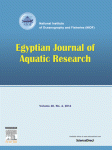
Egyptian Journal of Aquatic Research
Leading the way in aquatic research and ecological insights.Welcome to the Egyptian Journal of Aquatic Research, a premier peer-reviewed academic journal published by ELSEVIER, dedicated to advancing the field of aquatic sciences. With a robust impact factor and recognition as a Q1 journal in key categories such as Aquatic Science and Ecology, this open access journal has established itself as a vital platform for disseminating high-quality research since its inception in 2012. The journal aims to provide comprehensive coverage of topics including ecology, evolutionary biology, and water science, making it a crucial resource for researchers, professionals, and students engaged in these dynamic fields. With Scopus rankings placing it in the top echelons of various categories, the Egyptian Journal of Aquatic Research fosters innovation, collaboration, and knowledge dissemination on a global scale, making it an indispensable asset for anyone invested in understanding and preserving aquatic systems.

Glasnik Hemicara i Tehnologa Bosne i Hercegovine
Nurturing Collaboration for Scientific ProgressGlasnik Hemicara i Tehnologa Bosne i Hercegovine is a distinguished journal dedicated to advancing the fields of chemistry and technology within Bosnia and Herzegovina and beyond. Published by the University of Sarajevo, Faculty of Science, this academic journal offers a platform for the dissemination of original research, reviews, and case studies that contribute to the rich tapestry of knowledge in chemical sciences and technological applications. With a commitment to promoting open access to vital research, Glasnik Hemicara i Tehnologa cultivates an inclusive environment for researchers, professionals, and students alike, fostering collaboration and innovation. Although specific metrics such as impact factor and H index are yet to be established, the journal's role in bridging academia and industry cannot be overstated, making it an essential resource for those engaged in scientific inquiry in the region.
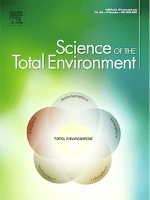
Science of The Total Environment
Advancing Environmental Knowledge for a Sustainable FutureScience of The Total Environment, an esteemed journal published by Elsevier, holds a significant position in the field of environmental science, encompassing critical areas such as Environmental Chemistry, Environmental Engineering, Pollution, and Waste Management and Disposal. With an impressive impact factor and ranked in the Q1 quartile across its categories for 2023, the journal is recognized for its high-quality research output and contribution to environmental sustainability. Operating from its base in the Netherlands, the journal has been a valuable resource since its inception in 1972, welcoming innovative studies that address complex environmental challenges. Its notable rankings—such as Rank #9 in both Environmental Sciences and Pollution—underscore its relevance and influence in the academic community. Although the journal currently does not provide an open access option, the robust findings and discussions presented within its pages continue to foster a deeper understanding of environmental issues. Science of The Total Environment is an essential platform for researchers, professionals, and students dedicated to advancing knowledge and solutions in the rapidly evolving field of environmental science.

CRITICAL REVIEWS IN ENVIRONMENTAL SCIENCE AND TECHNOLOGY
Exploring Innovations in Environmental ResearchWelcome to CRITICAL REVIEWS IN ENVIRONMENTAL SCIENCE AND TECHNOLOGY, an esteemed journal published by Taylor & Francis Inc. This journal has been at the forefront of environmental research since its inception in 1993, spanning a wide range of disciplines including environmental engineering, pollution control, waste management, and water science. CRITICAL REVIEWS holds an impressive Q1 ranking in multiple categories, including Environmental Engineering and Pollution, demonstrating its critical role in advancing knowledge within the field. With a remarkable Scopus ranking—placing it in the top 1% for Environmental Science categories—this journal serves as an invaluable resource for researchers, professionals, and students alike, providing comprehensive reviews and analyses that catalyze innovative solutions to pressing environmental challenges. Though currently not open access, the journal's content is accessible through various academic platforms, ensuring that cutting-edge research is available to a global audience. Join the community of scholars dedicated to enhancing our understanding of environmental science and technology through rigorous investigation and critical discourse.